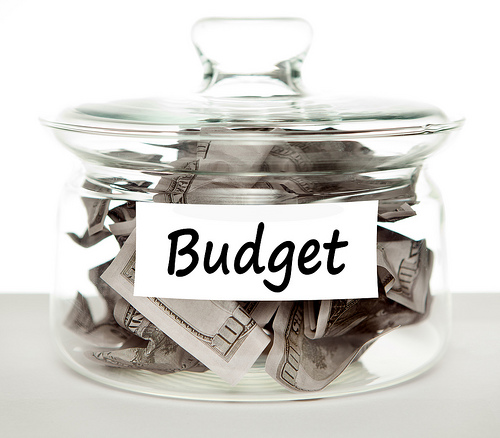Last week I wrote about where to start if you’re new to budgeting. Now we’re going to set pen to paper and nail down some concrete strategies for crafting a family budget that actually works for you.
We already outlined how to track expenses and separate wants from needs. Armed with this information, you are now fully capable of creating a budget that puts you on the right financial track. But first, you have a few more things to take care of.
1. Decide on a financial goal
A budget without a goal is like a TV show without a relate-able central character; there’s little motivation to stick with it through the end.
You need a powerful financial goal to make your budget work. For many families, their main goal is to get out of debt. This can be a very powerful goal, especially since it allows you to set deadlines and hold yourself accountable for meeting those deadlines.
Other examples of financial goals are:
- Saving enough money for a down payment on a home
- Saving for retirement
- Having enough room in your budget for annual vacations
- Growing a college fund for your children
All these are excellent financial goals, but no matter what you choose it needs to be tailored to you and your family. The right goal will give you the motivation to carry on when the going gets tough.
2. Choose a budgeting platform
There are literally hundreds of software programs designed to help you craft a family budget, many of them free of charge. You want to choose a budgeting platform that is easily accessible, that you can quickly check and update without a hassle, and that has all the features you need.
Here are a few free budgeting apps and programs to test out:
- Mint, a budgeting platform that includes a mobile app, desktop software, and customized tips
- HomeBudget with Sync, not free (currently $4.99), but you can use this app to sync all your bank and credit card accounts onto an intuitive interface
- BillGuard, a free app that also includes automated alerts any time an account is about to be overdrawn
Despite all the features of budgeting technology, many people do just fine with good old pen and paper. The most important thing is that you find a platform that works for you and your family.
3. Divide and conquer
Do make an effective budget, you need to divide your spending into several categories. You’ll have categories for bills (the kind you must pay every month) and discretionary spending categories for things like entertainment or travel. Budgeting software can help you easily categorize all your spending, and some programs can even update them automatically using your bank or credit card accounts.
Once you’ve separated your spending into categories, look for areas where you can cut back. You don’t necessarily need to take a hatchet to your spending; oftentimes, simply knowing where your money goes can help you eliminate spending money on things you don’t necessarily want or need.
4. Choose a tactic for controlling spending
Now comes for the most difficult part – sticking with your budget. You don’t want to erase weeks or months of progress with a single spending spree, so you need a tactic for controlling your spending.
One strategy is the envelope method. Start by allocating funds for each spending category. Once you’ve used up the money in each “envelope,” you’re done for the month. This method helps you put a brake on certain expenses, without the pain of eliminating them completely.
Another strategy is to reward yourself for your budgeting progress. If you’ve managed to stick with your budget for a while, or if you’ve reached a short-term financial goal, allow yourself leeway to spend some money as a reward for your hard work! It doesn’t have to be huge, but it give you something to look forward to as you stick with your budget.
5. Don’t wait to start saving
As you embark on your family budget, don’t delay putting money into savings. Even if your main goal is to pay off debt, you need some money saved for emergency expenses – this helps make sure you don’t slide back into debt when something unexpected happens (like medical bills, car repairs, etc.).
Once you’ve completed your financial goal, that doesn’t mean you should stop budgeting, either. Come up with a new goal and enjoy the financial freedom that having a working budget gives you!
For more budgeting and credit repair tips, check back with our blog regularly.


Recent Comments